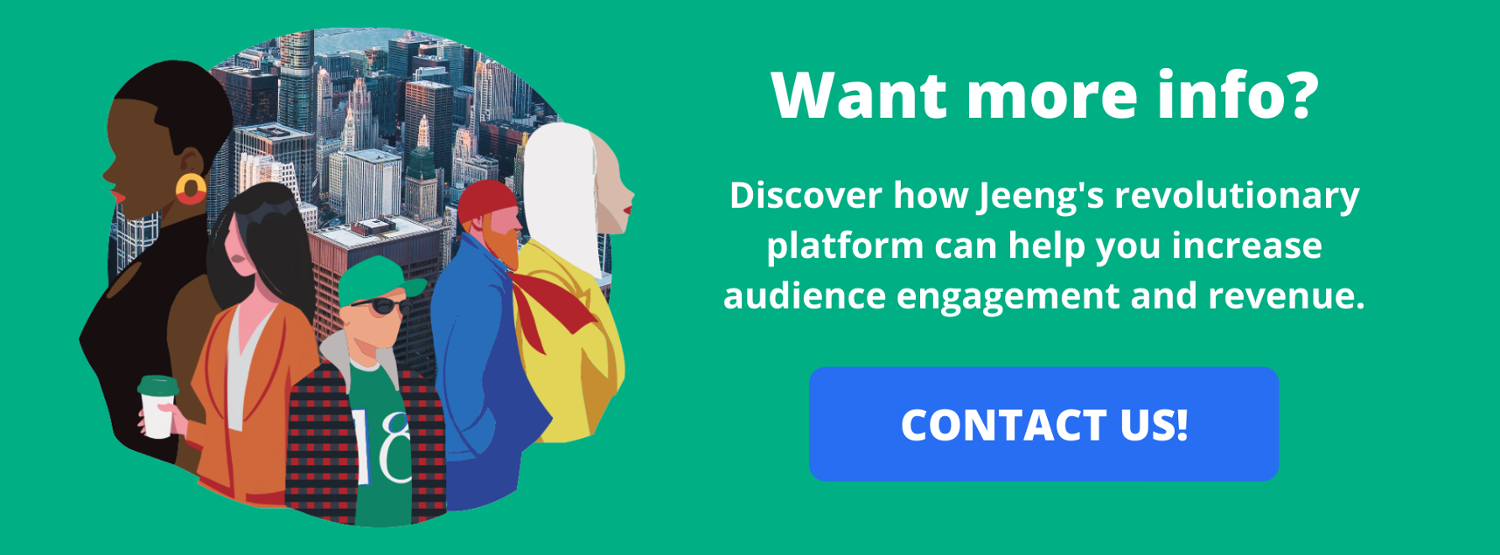It’s frightening being a publisher today, constantly competing for views, clicks and engagement.
There are many moving parts necessary for a successful multichannel messaging campaign that hits the jackpot of user engagement and revenue.
In honor of Halloween, we’re here to warn you of what will scare off users and put your marketing campaigns into the grave. Stay away from trouble by avoiding these top 10 frightful habits.
1. Sending batch and blast emails
In simplest terms, batch and blast emails mean sending the same exact email to all of your subscribers. Without personalization or targeting, sending these types of emails is like trick-or-treating in the dark, aimlessly attempting to land in as many inboxes as possible.
While that may sound harmless, it increases the likelihood that your messages get tagged as spam. About 28.5% of emails worldwide get marked as spam, according to Statistica.
You want to do everything in your power to prevent your emails from ending up as spam, and one of the best ways to do that is to send personalized and relevant content to those who have opted in to receive emails from you.
2. Bombarding audiences with push notifications
Push notifications are an excellent way to circumvent online clutter and connect straight with your target audience. The catch is that push notifications need to be used with consideration.
Bombarding your audiences with constant push notifications will increase the chances that they will turn them off. Keep the screams to a minimum and ask users to sign up for push notifications and give them the ability to customize the settings.
3. Showing irrelevant ads
Online users usually dislike ads, especially irrelevant ones. However, ads that match their interests or needs spark intrigue and are more likely to prompt a user to click and engage. To avoid the seething cauldron, keep cooking up personalized and pertinent ads.
4. Emailing people who unsubscribed
Don’t be a creep. People who unsubscribe have many reasons, but the point is that they are no longer interested in your content. Put the question of “why” they unsubscribed aside for now, and do not continue emailing them. It’s worthwhile to sweep up and segment your email lists from time to time. Ensuring that only people who want your emails receive them keeps your open and engagement rates higher. Haunting people via email gets you marked as spam.
5. Relying on third-party cookies
Third-party cookies are experiencing their end of days because Safari and Firefox already disabled third-party cookies and Chrome will phase them out by 2022. With no afterlife in the cards for third-party cookies, publishers are left to nurture and develop customer relationships without online tracking.
Having a strong first-party data strategy will make it or break it for publishers. First-party data gives publishers and advertisers a native ability to track and target their target users without compromising consumer privacy. One way to buffer your campaigns is to leverage customer data through email marketing.
6. Depending on social media for audience engagement
While a social media presence is crucial for a company’s reputation, it’s almost like dealing with the devil since you do not own the content there. Publishers and advertisers alike believe that posting on social media networks like Facebook, Twitter and Instagram provide a free way to reach audiences. However, this is a superstition because these networks purposefully block organic reach and the ever-changing and mysterious algorithms make it exceedingly difficult to get your posts noticed without paid ads.
7. Spreading fake news
Cut the hocus pocus, there’s enough of that online. Statista reports that 80% of adults in the US have consumed or been exposed to fake news online, and that basically half of the users in the US knowingly or unknowingly shared fake news.
Meanwhile, we learned in our 2021 Digital Publishing Consumer Survey that Gen Z and Millennial internet users trust publishers, and frequently rely on them for important news stories. That trust is not something to take for granted. Carefully protect your channels from fake news. Stay reputable by building and retaining your audiences by servicing them with data-backed and relevant content.
8. Sending irrelevant content to email subscribers
On the topic of trust, our 2020 survey showed 45% of subscribers are more likely to read publishers’ emails when they trust the company. Remaining relevant to and trusted by recipients means knowing exactly what your audience wants to see and brewing that.
Optimize campaigns to give consumers what they want and watch your engagement skyrocket. Take note of this Accenture study that found 83% of consumers are OK with sharing data when they get personalized content in return. What we learn is that subscribers want personalized and relevant content in their inboxes and on their devices. Unless you don’t mind a tombstone…
9. Leaving empty space in your emails
That empty lot looks a little eerie! If there’s a place for ads in your email newsletters, you better be using it wisely to drive engagement and revenue! You’ve got to decide whether to use text, native or display ads, then power them up to the right audiences and customized content. There are many smart ways to include ads in your email newsletter campaigns so don’t forgo that extra revenue.
10. Doing it all alone
Unless you are supernatural, you don’t need another task on your to-do list. Many publishers think they can manage increasing audience engagement on their own. True, there are lots of magical tools out there to tackle various elements.
But with so many components and the sheer volume of details comprising a robust and successful multichannel messaging campaign, using a centralized platform is the only way to manage without witchcraft. An automated system will facilitate all of your marketing campaigns and channels with one click.
No more nightmares when you prioritize audience engagement with Jeeng, a platform built specifically for publishers to grow engagement, drive traffic and increase revenue. This automated system learns about your audience and serves them with personalized content across channels, push notifications, email, web, and newsreaders.
Grab some candy and schedule a demo today! Happy Halloween!


